Thingiverse
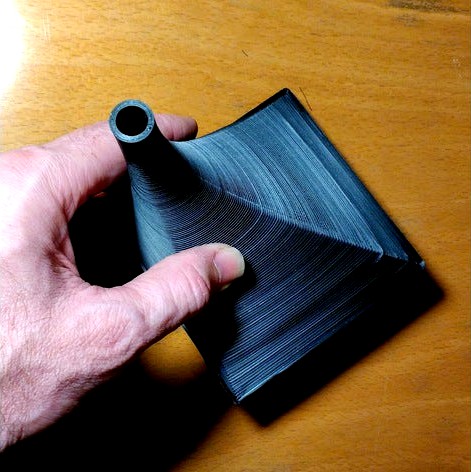
Exponential Horn by jbeale
by Thingiverse
Last crawled date: 3 years ago
For an outdoor recording project I wanted a small offset exponential horn that transitioned from round to square. The round end connects to a 9.7mm OD round electret mic (PUI Audio AOM-5024L-HD-R) and the other end matches a square opening in an enclosure.
You may notice it is not axially symmetric: the small round end is offset from the centerline, so I can mount it horizontal but with the mic element towards the top. That way any rain that might come in the open end would tend to run down and away from the mic.
Initial testing shows this horn is highly directional in the 1 kHz to 5 kHz range, with maybe +18 dB gain (rough guess 20 degree beamwidth?) relative to the same element used bare with no horn, based on measuring noise of crickets near 2 kHz. At low frequencies, of course it rolls off to no relative gain.
It may be a bit tricky to print due to the low, nearly horizontal slope on two sides near the base, but I managed it. The interior did have a bunch of stringy threads to clean up, although I doubt they affect the sound. In fact I later added some wispy material (like pillow stuffing, or fake spiderweb Halloween decor) inside the horn to reduce wind noise. Here is a recording from it https://youtu.be/hPLfLMcTJE8 of two cars passing by on the road in opposite directions. Try listening in headphones. You can hear them coming some way off, and some leaves rustling along the road also. Here is a night-time thunderstorm: https://www.youtube.com/watch?v=aBam2T9lZUk
I'd be amazed if anyone else wanted exactly this, but maybe it's close enough for the OpenSCAD file to be adaptable to your needs.
UPDATE: it's been outdoors for over a year now, in a box just under the roof eaves. Electret mics generally fail in damp and condensing-moisture conditions like what we've had here, but it seems that the heat from the R-Pi CPU inside the box right next to the electrets has kept them dry and working fine. This exponential horn was key to letting the sound in while the wispy stuffing inside slowed air motion, allowing a temperature and relative humidity gradient along the interior length of the horn to keep moisture away from the electret.
UPDATE2: Slightly improved geometry and fit to 9.7mm mic capsule added as Exp-Horn2. This one is symmetric by default, although the SCAD file does allow an offset like v1.
UPDATE3: I added two shorter, curved versions, that bend over. "Exp-Horn-Curve-975" has a 9.75 mm (ID) round opening at the top, and a square base 55 mm on a side. Those values can be adjusted in the SCAD file. "ExpHorn975-pocket" is the same curved horn on the outside, but tapers to a smaller 3.46 mm ID throat, and the 9.75 mm ID at the top is a shallow pocket, matching one specific microphone capsule.
You may notice it is not axially symmetric: the small round end is offset from the centerline, so I can mount it horizontal but with the mic element towards the top. That way any rain that might come in the open end would tend to run down and away from the mic.
Initial testing shows this horn is highly directional in the 1 kHz to 5 kHz range, with maybe +18 dB gain (rough guess 20 degree beamwidth?) relative to the same element used bare with no horn, based on measuring noise of crickets near 2 kHz. At low frequencies, of course it rolls off to no relative gain.
It may be a bit tricky to print due to the low, nearly horizontal slope on two sides near the base, but I managed it. The interior did have a bunch of stringy threads to clean up, although I doubt they affect the sound. In fact I later added some wispy material (like pillow stuffing, or fake spiderweb Halloween decor) inside the horn to reduce wind noise. Here is a recording from it https://youtu.be/hPLfLMcTJE8 of two cars passing by on the road in opposite directions. Try listening in headphones. You can hear them coming some way off, and some leaves rustling along the road also. Here is a night-time thunderstorm: https://www.youtube.com/watch?v=aBam2T9lZUk
I'd be amazed if anyone else wanted exactly this, but maybe it's close enough for the OpenSCAD file to be adaptable to your needs.
UPDATE: it's been outdoors for over a year now, in a box just under the roof eaves. Electret mics generally fail in damp and condensing-moisture conditions like what we've had here, but it seems that the heat from the R-Pi CPU inside the box right next to the electrets has kept them dry and working fine. This exponential horn was key to letting the sound in while the wispy stuffing inside slowed air motion, allowing a temperature and relative humidity gradient along the interior length of the horn to keep moisture away from the electret.
UPDATE2: Slightly improved geometry and fit to 9.7mm mic capsule added as Exp-Horn2. This one is symmetric by default, although the SCAD file does allow an offset like v1.
UPDATE3: I added two shorter, curved versions, that bend over. "Exp-Horn-Curve-975" has a 9.75 mm (ID) round opening at the top, and a square base 55 mm on a side. Those values can be adjusted in the SCAD file. "ExpHorn975-pocket" is the same curved horn on the outside, but tapers to a smaller 3.46 mm ID throat, and the 9.75 mm ID at the top is a shallow pocket, matching one specific microphone capsule.
Similar models
grabcad
free

Electret microphone 9.7mm dia 2.54mm pin pitch. step file
...electret microphone 9.7mm dia 2.54mm pin pitch. step file
grabcad
electret microphone 9.7mm dia 2.54mm pin pitch
thingiverse
free

Customizable exponential horn for audio amplification
...ions are for the inside space of the horn. the thickness is added to the inside dimensions perpendicularly to the inside surface.
grabcad
free

Electret microphone 9.7mm dia 2.54mm pin pitch
...electret microphone 9.7mm dia 2.54mm pin pitch
grabcad
electret microphone insert commonly used in hobby projects.
thingiverse
free

Fixture for matching microphone capsules by the_digital_dentist
...to make a binaural mic to feed my sony pcm-m10 digital recorder and some other peoples' projects at the milwaukee makerspace.
thingiverse
free

Diy Mic housing for Primo EM172 omnidirectional capsule by UIC_MovingImage
...dering iron, you can build a circuit to step down 48v phantom power to 5v plug-in power. there are loads of schematics out there.
grabcad
free

horn
...horn
grabcad
exponential horn
thingiverse
free

Horn-X1 by Nr5Alive
...
i remixed the "toy horn" from richardjean. i´ve designed the inside new, for better printing without support material.
thingiverse
free

Horn (mechanical amplifier) for electret microphone by danielrioslinares
...e and not from the horn for best results. used with the czn-15e electret microphone and amplifies quite good with low distortion.
thingiverse
free

Ultimaker heavy-duty handle by jwags55
...touts".
removed the lettering
changed the square screw openings to round
added elliptical curves to the top and bottom
grabcad
free

Futaba Servo Horn - 35mm Round
...futaba servo horn - 35mm round
grabcad
35 mm round futaba servo horn. drawn from measurements on a physical servo horn.
Jbeale
thingiverse
free
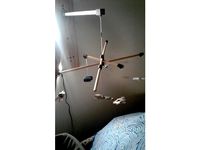
Mobile by jbeals
...mobile by jbeals
thingiverse
simple mobile using 1/4" dowel
thingiverse
free

Master Mechanic Drill Guide by jbeals
...master mechanic drill guide by jbeals
thingiverse
a simple attachment for drilling straight holes.
thingiverse
free

Cardboard Model Stands by jbeals
...ds and joiners were designed for junior high students to use for build scale models of various buildings in town out of carboard.
thingiverse
free

Dan Chan Cardboard Cutter Stand by jbeals
...dan chan cardboard cutter stand by jbeals
thingiverse
a simple stand for dan chan card board cutters.
thingiverse
free

Hacking STEM Hot Wheels parts by jbeals
... parts by jbeals
thingiverse
these are parts to assemble a hot wheels track for use with the hacking stem lesson from microsoft.
thingiverse
free

Parametric V Block by jbeale
...nscad file allows customization. i tried printing it both upright and standing on edge, but i recommend upright (v pointing up).
thingiverse
free

Circular Saw Jig by jbeals
...lid into the box from the ends. the circular saw will follow guide edges on the top of the box in order to make the desired cut.
thingiverse
free

Universal Joint with minibearings by jbeale
... pivot would. i printed this with pla on the ultimaker 2. you can see it in motion at https://www.youtube.com/watch?v=rqxttezyybk
thingiverse
free

8mm shaft collar by jbeale
...ews. currently adjusted to be quite close to nominal 8 mm so may need some cleanup / reaming to fit, and especially the m3 holes.
thingiverse
free
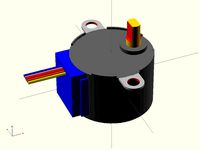
28BYJ-48 SCAD model by jbeale
...tepper motor at http://arduino-info.wikispaces.com/smallsteppers
slight update 21 july: wire diameter variable name typo fixed.
Exponential
3d_export
$66

custom 1973 fiat 128 rally
...be subdivided since they will increase the poly count exponentialy without really affecting the quality of the final render....
thingiverse
free

Customizable exponential horn for audio amplification
...ions are for the inside space of the horn. the thickness is added to the inside dimensions perpendicularly to the inside surface.
thingiverse
free
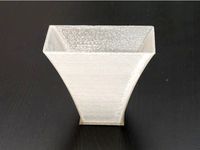
Exponential horn generator by arpruss
...h of flange around mouth, for mounting mouth into something; set to 0 to omit flange
flangeflare=x: how far the flange flares out
thingiverse
free

Fractional Derivative Graph of an Exponential Function by kahrendt
...-liouville fractional derivative is continuous with the respect to the order of the derivative, so this graph is nice and smooth.
thingiverse
free

Surface with Contours by wwebber
...thingiverse this is a hyperbolic paraboloid with a couple exponential bumps added on. then grooves are cut into the...
thingiverse
free

Cornucopia Exponential Horn iPhone Dock by YoungBuck
...wn the middle and ducting one to each side of it. but that's a task for another day... (one where i can afford an iphone 7!)
thingiverse
free

Xeon Phi 80mm fan duct, first production 001 by making_3d_changes
...40mm design for single 80mm fan. first model using exponential airflow...
thingiverse
free

Box with holes by roman_hegglin
...examples of boxes with holes. the filesize is growing exponentialy, so the box with 5x5x3 holes is quite a...
thingiverse
free

Octopus by dennedesigns
...legs is based on a sinusoidal curve which decreases exponentialy with each...
Horn
3d_export
$5
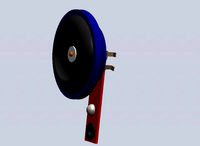
car horn
...car horn
3dexport
car horn, car electronics gadgets, horn, speaker
turbosquid
$2

horn
...rn
turbosquid
royalty free 3d model horn for download as max on turbosquid: 3d models for games, architecture, videos. (1619705)
turbosquid
$12

Horn
...d
royalty free 3d model horn for download as ma, ma, and png on turbosquid: 3d models for games, architecture, videos. (1580361)
3ddd
free

AQUA / horn
...aqua / horn
3ddd
aqua creations
aqua / horn
turbosquid
$29
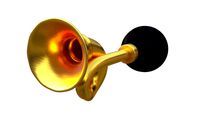
horn
...lty free 3d model horn for download as c4d, obj, fbx, and 3ds on turbosquid: 3d models for games, architecture, videos. (1557688)
turbosquid
$29

horn
...lty free 3d model horn for download as c4d, obj, fbx, and 3ds on turbosquid: 3d models for games, architecture, videos. (1557645)
turbosquid
free

Horns
...ee 3d model horns for download as max, obj, fbx, dxf, and dae on turbosquid: 3d models for games, architecture, videos. (1669043)
turbosquid
$20
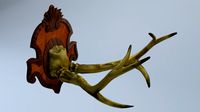
horn
... available on turbo squid, the world's leading provider of digital 3d models for visualization, films, television, and games.
turbosquid
$6
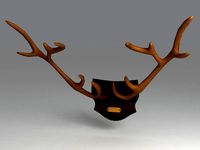
Horns
... available on turbo squid, the world's leading provider of digital 3d models for visualization, films, television, and games.
turbosquid
$5

Horn
... available on turbo squid, the world's leading provider of digital 3d models for visualization, films, television, and games.
